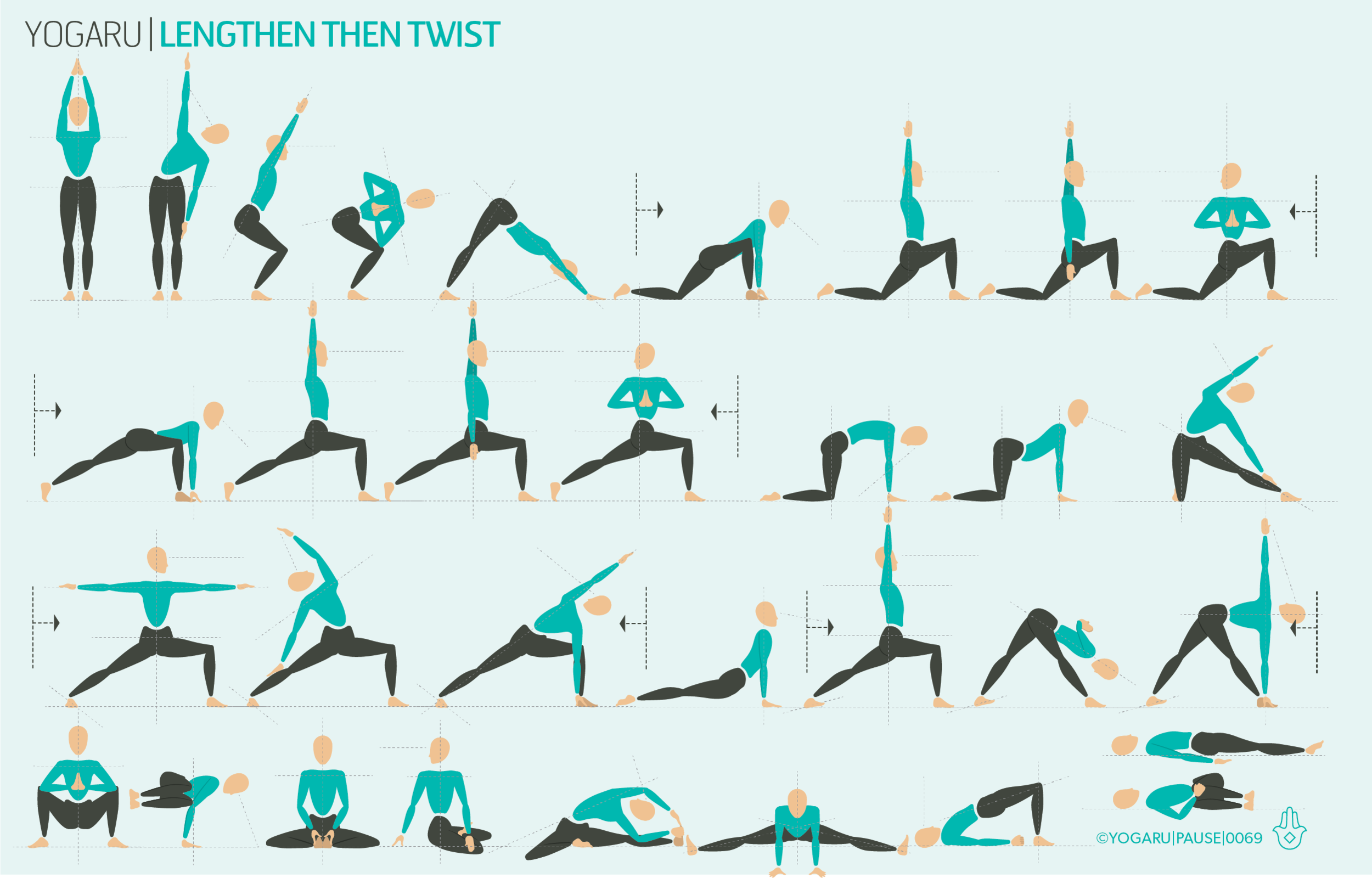SUMMER CLEANSE
Holiday are all about tasting regional specialities and immersing yourself in the local culture. This may mean that you are sampling foods that are not usually part of your diet. I sometimes find that on my return it takes a few weeks to reclimitise to my regular home routine. This year, with a touch of post travel tiredness and headaches, I embarked on a mini cleanse to reboot my system and reinvigorate my savoury gut microbiome. I practices my Gutsy Flow everyday and followed the Rich Roll cleanse for five days – which included 100% veg smoothies, mushroom broths, chlorella and lots of water. After the cleanse I noticed a spectacular increase in my energy levels, clarity of mind and fluidity of movement. I was bouncing out of bed at 5:30am to teach my morning class and was still awake at 9:30pm which is very unheard of! The cleanse encourages you to write notes on each day of your cleanse. My day five note to self was:
GOOD FOOD = ENERGY = HAPPINESS
TWISTS
Twists wring out the digestive system and massage the digestive tract. In yoga we twist to the right first to stimulate the ascending colon first, and we twist to the left after to stimulate the descending colon – aiding regular elimination and toxin removal from the body. Similar to backbends, when we twists we constrict the blood flow, and on releasing a surge of blood rushes back – bringing with it a fresh supply of oxygen and flushes out the system. Click this link to get a full list of twists.
FIND LENGTH FIRST
This sequence takes a step back from twists and looks at what you can do before you twist to maximise the rotation in the spine. When you twist a piece of cord you’ll notice that the more you twist it the shorter the cord gets. The same thing happens in the spine as you twist. You may reach an end point where you hit vertebrae to vertebrae before you reach the limitation of your muscle stretch. Lengthening up the spine through side bends first, and lifting the torso up out of the deep pelvic bowl, helps to find extra space between the vertebrae before you take your twist.
EXPLORING LENGTHENING THEN TWISTING
After you take your side bend make sure you come back to centre first before you move into the twist. When you are in a twist play around with placing the hand of the side you are twisting to on the small of your back and feeling for the position of your pelvis. Can you keep the hips squared forward to the front of the mat rather than following the rotation of the twist. See can you sense if both hips are level to each other too. The hip on the side you are twisting to can sometimes lift up which shortens the side of the waist and limits your twist.
ALIGNMENT CUES
Print out this sequence and explore the difference taking a side bend first can make to your twisting practice:
In Utkatasana/Chair Pose check to see are the knees in line with each other or has the twisting side knee drifted back.
In Anjaneyasana/Low Lunge & Ashta Chandrasana/Eight Crescent Moon notice how much harder it is to twist without the aid of something to press against.
Parivrtta Trikonasana/Revolved Triangle is a very deep twist for the spine. Place your hand on your lower back and check to see is the top of the pelvis level and both left and right sides are in line with each other. Use a brick on the high level to help you keep the pelvis level and stable.
If Balasana/Crow Pose is not part of your practice take the preparatory stage and you’ll get a lovely twist through the spine without having to master the full arm balance.
Remember to drink plenty of water after a twisting sequence to help the system flush out all the toxins from the organs.
To save the images for personal use click and hold down the image until the ‘save image’ option appears; on Mac hold down ‘control’ and click the image to get the option box; on PC right click on the image to get the option box. Scroll down in the ‘option box’ and click ‘save image’.
Ruth Delahunty Yogaru




